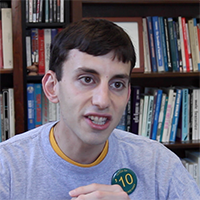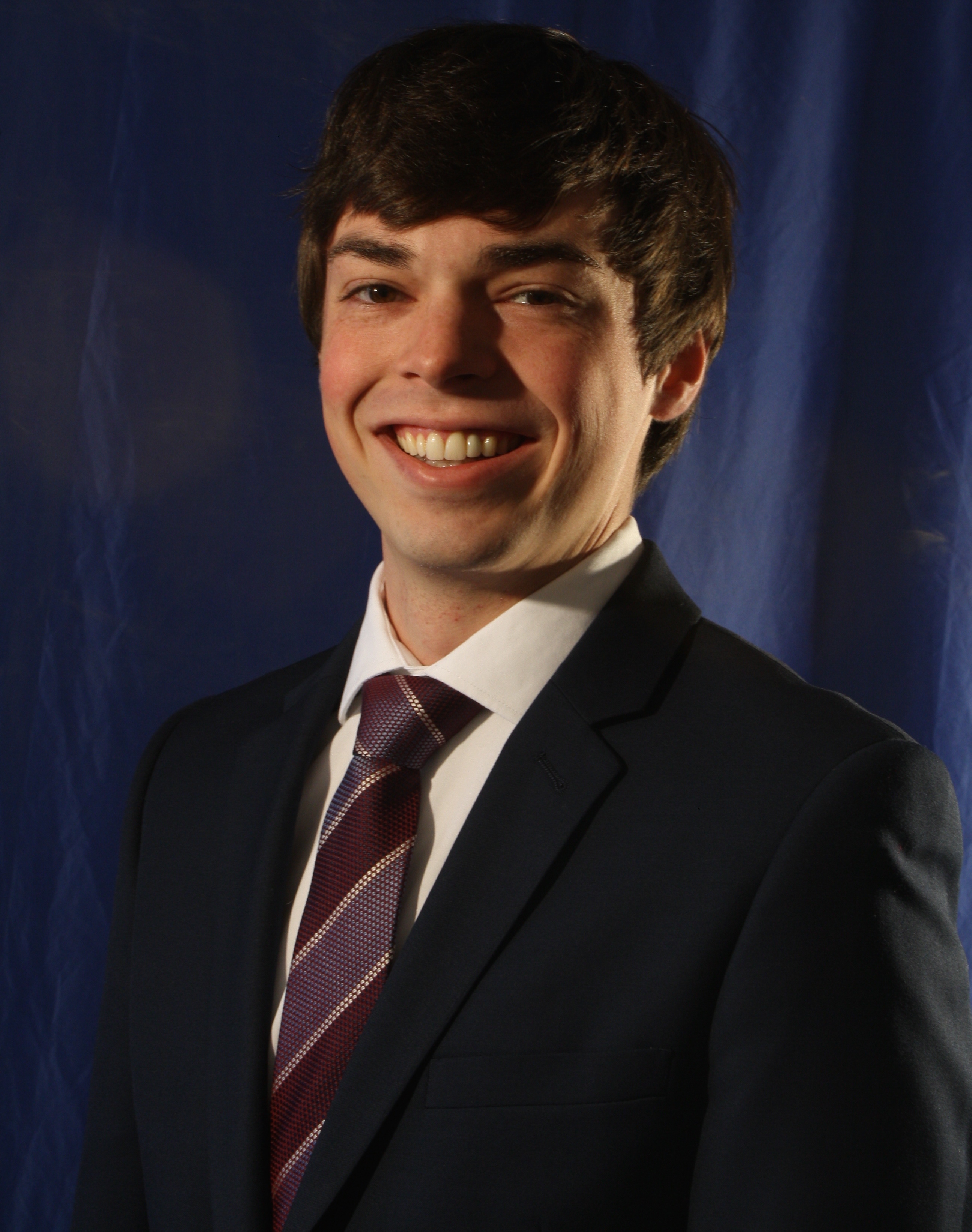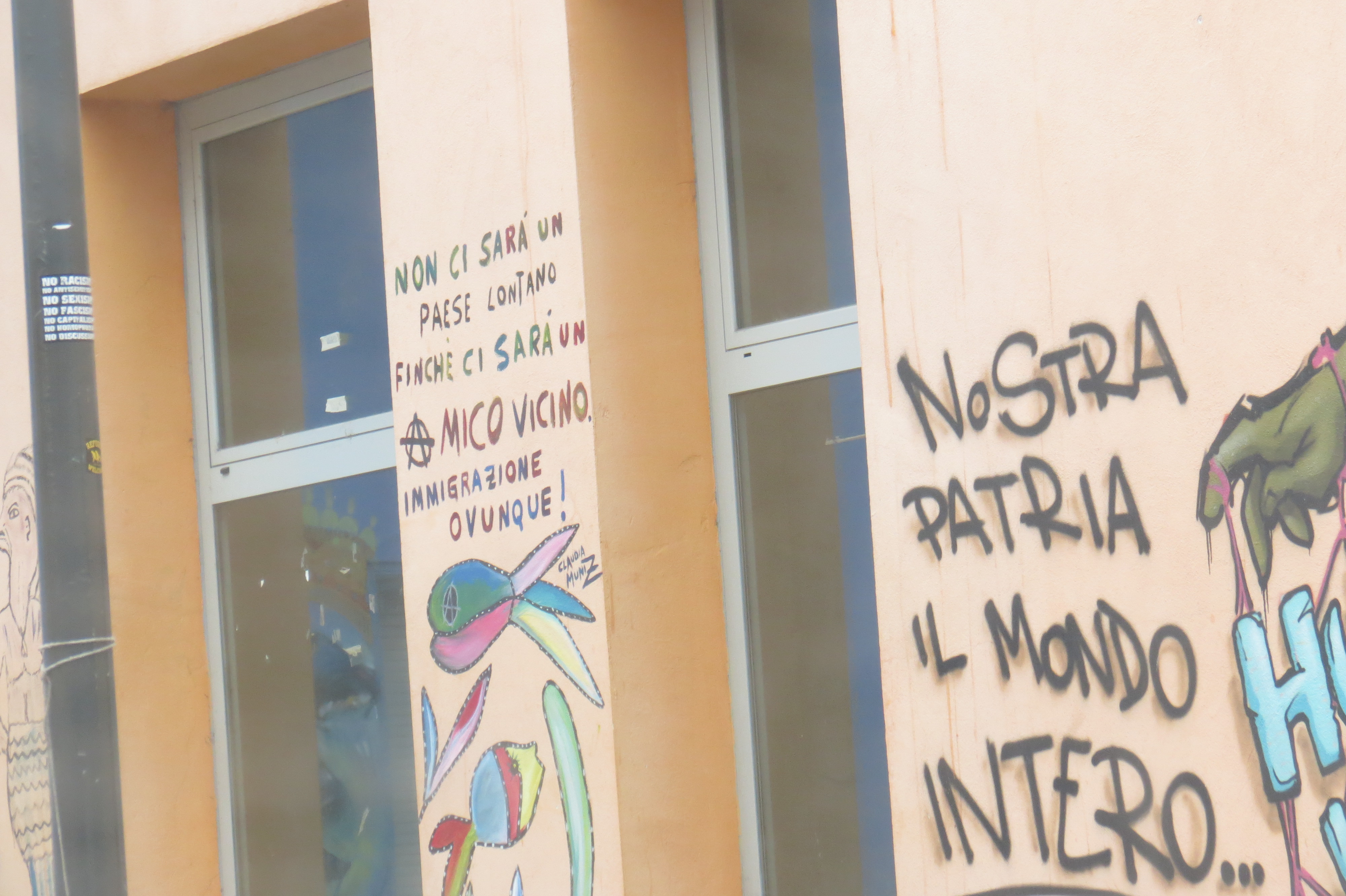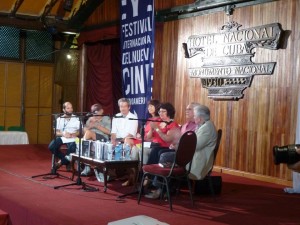There has never been a time in my life when I don’t remember my mother telling me stories of her junior year abroad in Montpellier, France. From describing her breakfasts to the amazing springtime trips with her friends, my mother filled my imagination with her memories and emotions from her life years before. It’s not a surprise, then, that with these stories came the assertion that, when the time came, I would have my own adventure abroad.
But I was stuck. In my own imagining of my future time abroad, I never felt a connection with a certain language or a certain culture where I was sure I could feel at home for an entire year. I took Spanish all th rough high school and had basically accepted that I would be going to either South America or Spain, but my heart wasn’t fully content. I didn’t know what to do.
rough high school and had basically accepted that I would be going to either South America or Spain, but my heart wasn’t fully content. I didn’t know what to do.
The love I developed for Italian then fell into my lap completely by accident. During my first experience with registering for college classes in the fall of 2013, I quickly realized that my Spanish skills were not good enough to place me above the 202 level despite my four years of experience. Only taking a language for fun in the first place, I soon settled on a completely random language to start from scratch: Italian. I took it because I liked Olive Garden and because my step-dad’s family is from Italy, but I had no major attachments to the language, nor the culture. I wasn’t even taking Italian with the idea that I would one day study abroad there; at that point, I was still invested in the William & Mary/St. Andrews Dual Degree Program, where I would spend my sophomore and junior years abroad in Scotland.
Soon, though, I knew I couldn’t go through with choosing Scotland over Italy. After only a few weeks in the Italian department at William & Mary, I was completely hooked. I would study for hours and complete the writing prompts with such fervor that I surely seemed crazy. I loved going to the Italian House activities, and signed up to live there as soon as I decided to leave the Dual Degree Program. By the fall of my sophomore year, spending a year in Italy was becoming a quick-coming reality.
I chose my program in Siena for several reasons: the first is that the town is not as big as many study abroad towns in Italy, and therefore does not have quite so many English speakers as the main metropolitan cities. The second reason is the service component, where we must go out into the community for several hours a week and give back, whether that is teaching English, helping at a nursing home, aiding the town’s emergency responders, or whatever other opportunities present themselves. The third and probably biggest reason is the host family experience. I had spent my entire life hearing about my mother’s wonderful host family in France, and even had the pleasure of meeting them this past summer. In choosing between my several location options in Italy, I had to decide whether having a host family was an important enough factor for me to choose the Siena program. After a quick phone call to my mom and a prayer that I would be placed with a nice family, I sent in my application to Siena Italian Studies.
It was the best decision I ever made. After only a week of being in Siena, my host family had already started to feel like a home away from home. They fussed over me and made sure I liked the food, and included me in every activity they took part in. My host sister, Luisa, quickly became one of my best friends in the world. She is 18 and in her last year of high school, so our ages are similar enough that we can share friends and activities easily. I often tag along to birthday parties and dinners out with her friends, and they have all accepted me a s part of the gang. I can’t imagine going through this year without this family.
s part of the gang. I can’t imagine going through this year without this family.
Because the truth of the matter is, too, that doing a whole year abroad can be really hard. Even in a place as wonderful as Italy, I have had my fair share of homesickness and sadness that only comes with being away from all things familiar for a long period of
ime. William & Mary was the only school I applied to, so to choose to go away for an entire year was heartbreaking, on a certain level. And being away from my family for so many months at a time was almost impossible to think about doing. But my host family gave me opportunities to feel like a part of a family over here, too, in a way that makes missing my real family not as painful.
For me, choosing to do an entire year abroad instead of just one semester has allowed me to build relationships with the community and culture that would be impossible in a shorter amount of time. For my community service, I have been
able to work with the same group of kindergarteners since September and therefore build a deeper and more trusting relationship with them, as well as see how much they have progressed since early fall. I feel less like a temporary tourist and more like a part of the life that goes on here in Siena. I have developed preferences to certain stores and restaurants that I can continue to use throughout an entire other semester instead of rushing to try it all before time runs out. I can speak Italian better and with more confidence than ever before. I love that I can help my new Spring-semester-only friends find their way in a city that was once just as foreign to me, but now feels like a second home.
If I had to go back and do it all over again, I would choose exactly the same course for me. Siena, Italy has be en a place where I’ve grown as a person more than ever before, made lifetime relationships with the people in my program and especially with my host family, and learned how to become a part of a new culture by simply being willing to try. A year abroad gave me an opportunity to go above and beyond just the typical study abroad experience, and find my niche in a place on the other side of the world. It has been exciting, unbelievable,
en a place where I’ve grown as a person more than ever before, made lifetime relationships with the people in my program and especially with my host family, and learned how to become a part of a new culture by simply being willing to try. A year abroad gave me an opportunity to go above and beyond just the typical study abroad experience, and find my niche in a place on the other side of the world. It has been exciting, unbelievable,
and more than I ever could have imagined. I never want to say good-bye.



 Congratulations to Nic Querolo (’16), who has been awarded the 2016 MLL Book Prize in Japanese and recently defended his Honors Thesis, earning High Honors! Titled “Reconstructing a National Silhouette: Avant-Garde Fashion and Perceptions of the Japanese Body,” Nic’s thesis focuses on the avant-garde Japanese designer Rei Kawakubo and her label Commes des Garcon, examining how fashion as an industry and as artistic production responds to issues of gender and national heritage. His committee included Professors Tomoko Hamada-Connolly, from Anthropology; Jennifer Putzi, from the English Department and Women’s Studies Program; and Michael Cronin, from Japanese Studies. The topic reflects Nic’s interest in fashion as both a business and an art: he graduates this spring with one major in Finance and Business Administration and another major in Japanese Studies, self-designed and administered through the Charles Center. Nic’s engagement with Japan has developed over several years; he spent the spring semester of his sophomore year in the W&M study-abroad program at Keio University in Tokyo and he returned to Tokyo last summer with the support of a Charles Center Honors Fellowship. Learn more about his research by watching the video below. Best of luck, Nic!
Congratulations to Nic Querolo (’16), who has been awarded the 2016 MLL Book Prize in Japanese and recently defended his Honors Thesis, earning High Honors! Titled “Reconstructing a National Silhouette: Avant-Garde Fashion and Perceptions of the Japanese Body,” Nic’s thesis focuses on the avant-garde Japanese designer Rei Kawakubo and her label Commes des Garcon, examining how fashion as an industry and as artistic production responds to issues of gender and national heritage. His committee included Professors Tomoko Hamada-Connolly, from Anthropology; Jennifer Putzi, from the English Department and Women’s Studies Program; and Michael Cronin, from Japanese Studies. The topic reflects Nic’s interest in fashion as both a business and an art: he graduates this spring with one major in Finance and Business Administration and another major in Japanese Studies, self-designed and administered through the Charles Center. Nic’s engagement with Japan has developed over several years; he spent the spring semester of his sophomore year in the W&M study-abroad program at Keio University in Tokyo and he returned to Tokyo last summer with the support of a Charles Center Honors Fellowship. Learn more about his research by watching the video below. Best of luck, Nic! Erin writes:
Erin writes: Since graduating in 2013, Tilghman Goldsborough has been busy pursuing a variety of jobs, first in his hometown of Richmond, Va. and now in Germany, and he has plans to start graduate school in Germany soon. A Philosophy major, Tilghman became interested in Germany after taking part in the W&M Potsdam Program the summer after graduation. For almost a year now, he has been living as an au pair with a family in the suburbs of Stuttgart, tutoring the children and helping them improve their English. He has also had some of his poems published in an on-line literary magazine! After finishing his year with the family, he plans to pursue a Master’s Degree in American Studies at a German university. He says that, while the language still presents some challenges, he really likes the honesty of the Germans because you usually know where you stand with people there. He has regular contact with two other W&M graduates, one of whom lives in Stuttgart and studies at the University of Tubingen, and the other lives in Berlin. His advice to W&M graduates who might be thinking of moving to Germany is to “treat it like you’re moving anywhere new where you don’t really know anyone (or the language).” He suggests having a plan (and staying on top of the visa rules and regulations) but also staying open to opportunities that come up. Finally, Tilghman says to have fun and meet people. Living abroad “can be persistently low-key terrifying, but make the most of whatever it is you’re doing; the world is your oyster, und so weiter.”
Since graduating in 2013, Tilghman Goldsborough has been busy pursuing a variety of jobs, first in his hometown of Richmond, Va. and now in Germany, and he has plans to start graduate school in Germany soon. A Philosophy major, Tilghman became interested in Germany after taking part in the W&M Potsdam Program the summer after graduation. For almost a year now, he has been living as an au pair with a family in the suburbs of Stuttgart, tutoring the children and helping them improve their English. He has also had some of his poems published in an on-line literary magazine! After finishing his year with the family, he plans to pursue a Master’s Degree in American Studies at a German university. He says that, while the language still presents some challenges, he really likes the honesty of the Germans because you usually know where you stand with people there. He has regular contact with two other W&M graduates, one of whom lives in Stuttgart and studies at the University of Tubingen, and the other lives in Berlin. His advice to W&M graduates who might be thinking of moving to Germany is to “treat it like you’re moving anywhere new where you don’t really know anyone (or the language).” He suggests having a plan (and staying on top of the visa rules and regulations) but also staying open to opportunities that come up. Finally, Tilghman says to have fun and meet people. Living abroad “can be persistently low-key terrifying, but make the most of whatever it is you’re doing; the world is your oyster, und so weiter.” Lisa checked in with us halfway into her Fulbright ETA:
Lisa checked in with us halfway into her Fulbright ETA: rough high school and had basically accepted that I would be going to either South America or Spain, but my heart wasn’t fully content. I didn’t know what to do.
rough high school and had basically accepted that I would be going to either South America or Spain, but my heart wasn’t fully content. I didn’t know what to do. s part of the gang. I can’t imagine going through this year without this family.
s part of the gang. I can’t imagine going through this year without this family. en a place where I’ve grown as a person more than ever before, made lifetime relationships with the people in my program and especially with my host family, and learned how to become a part of a new culture by simply being willing to try. A year abroad gave me an opportunity to go above and beyond just the typical study abroad experience, and find my niche in a place on the other side of the world. It has been exciting, unbelievable,
en a place where I’ve grown as a person more than ever before, made lifetime relationships with the people in my program and especially with my host family, and learned how to become a part of a new culture by simply being willing to try. A year abroad gave me an opportunity to go above and beyond just the typical study abroad experience, and find my niche in a place on the other side of the world. It has been exciting, unbelievable,



 “One of my friend’s grandmothers had her son kidnapped. She told us her story and we made a short documentary.
“One of my friend’s grandmothers had her son kidnapped. She told us her story and we made a short documentary. “[Where we started the project, we participated in a march to reclaim respect for the gay community], we were three guys and that was it. And for us three it was difficult to go out on the street with the flag because they shouted [expletive for male prostitutes] at us. And they discriminated against us when we weren’t gay, just that we went to change the discussion and end the discrimination.
“[Where we started the project, we participated in a march to reclaim respect for the gay community], we were three guys and that was it. And for us three it was difficult to go out on the street with the flag because they shouted [expletive for male prostitutes] at us. And they discriminated against us when we weren’t gay, just that we went to change the discussion and end the discrimination.
 Associate Professor Silvia Tandeciarz is teaming up with Assoc. Prof. Betsy Konefal to create a course and a research agenda focused on the recovery of collective memory, via cultural artifacts like art, literature and film, in the aftermath of Argentina’s last military dictatorship (1976-1983) and Guatemala’s internal armed conflict (1960-1996).
Associate Professor Silvia Tandeciarz is teaming up with Assoc. Prof. Betsy Konefal to create a course and a research agenda focused on the recovery of collective memory, via cultural artifacts like art, literature and film, in the aftermath of Argentina’s last military dictatorship (1976-1983) and Guatemala’s internal armed conflict (1960-1996).












